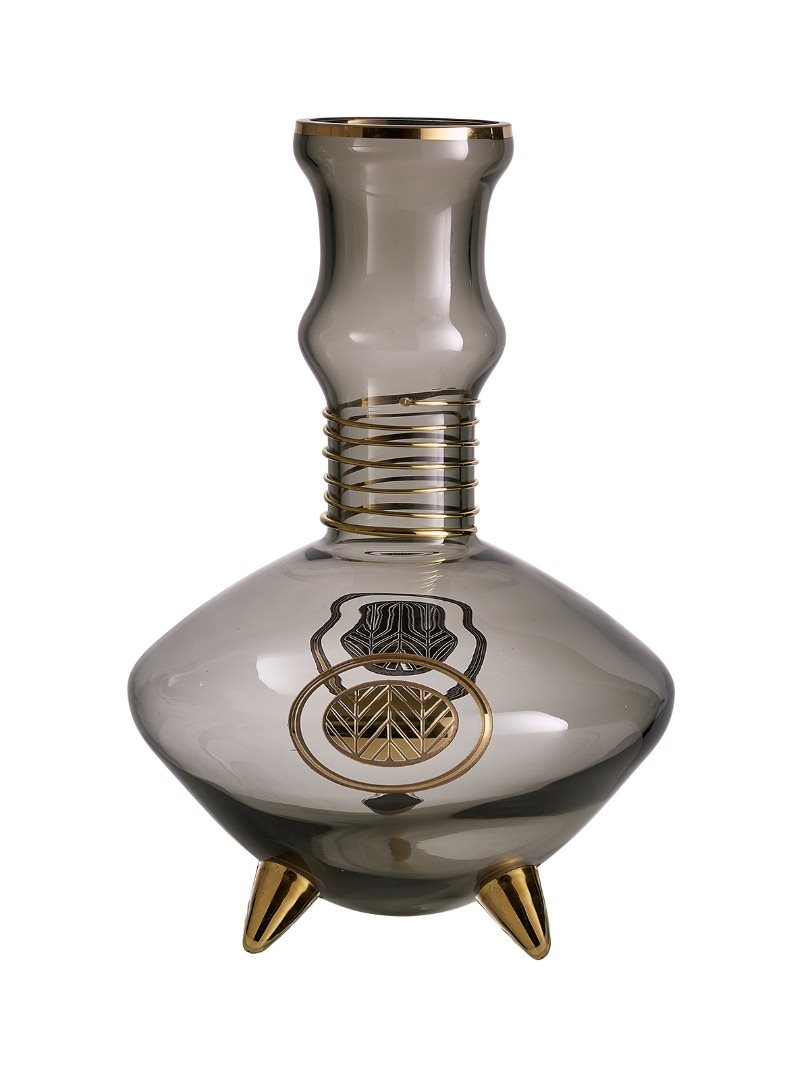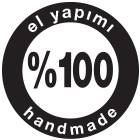
İlk Tunç Çağı Yortan mezarlığındaki kazılar 1901 yılında, bu bölgedeki Osmanlı İmparatorluk demiryolu hattının inşasında çalışan Fransız demiryolu mühendisi P. Gaudin tarafından başlatılmıştır. Gaudin ile Chapot tarafından 100’ün üzerinde mezar açığa çıkarılmıştır. Ancak bu önemli mezarlığın yeriyle ilgili arazi çalışması bugüne kadar yapılmamıştır. 2008 yılı yüzey araştırmaları sırasında Yortan mezarlığının yeri saptanmıştır. Manisa İli yakınlarında, en büyük İlk Tunç Çağı mezarlığı olma özelliği ile çok önemli bir buluntu merkezi olduğu düşünülmektedir. Hem ölü gömme adetleri, hem de bu mezarlardan çıkarılan buluntular dolayısıyla önem taşımaktadır.
Yortan Vazo, Yortan’dan çıkan MÖ. 2750-2300 yıllarına ait İç Batı Anadolu kültürünü temsil eden siyah renkli el yapımı toprak bir üründen esinlenerek tasarlanmıştır.
Yortan’dan birçok eser Amsterdam Üniversitesi, Allard Pierson Müzesi’nde sergilenmektedir.
Yortan Vazo, el imalatı smoke camdan üretilmiştir ve üzerindeki rölyef desenlerin tümü, 24 ayar altın kullanılarak dekorlanmıştır.
Üretim adedi 2.000 ile sınırlıdır
In a settlement used to be called Yortan, near the province of Manisa, on the northwestern Aegean region of Turkey, excavations at an Early Bronze Age cemetery were started in 1901 by a French railway engineer Paul Gaudin, who worked on the construction of the Ottoman Imperial railway line. Over 100 graves were opened by Gaudin and Victor Chapot, a representative of the French School of Athens, the institution which supported Gaudin's excavations financially.
For a long while, the importance of the finds had not been understood, as no full report had been drawn up on the excavation and its results. Furthermore, following the traditions of the time, Gaudin, brought the excavation finds out of Turkey which had been purchased by many European museums, making it more difficult to reach all of these scattered finds and have a work conducted on them. In addition, no land surveys have been performed on the location of this important cemetery until recently. During the 2008 survey, the location of the Yortan cemetery was finally determined. Having the characteristics of the largest Early Bronze Age cemetery in the region, it is considered to be a very significant find center. The location is noteworthy in terms of both the burial customs it revealed and the finds recovered from these graves.
The design of the Yortan Vase, draws its inspiration from a handmade black earthenware jug dating from 2750-2300 BC, representing the Inner West Anatolian culture.
Many artifacts excavated from Yortan are on display at the Allard Pierson Museum of the University of Amsterdam. Although it is rumored that there is a much larger treasure than the artifacts exhibited in museums today, it has not been proven in clear terms whether this treasure actually exists.
Yortan Vase is produced from handmade smoke glass and all of the relief patterns are decorated with 24-carat gold.
Çap : 19,6 cm
Yükseklik : 30 cm
% 100 el yapımıdır.
Ürünün Menşei : Türkiye
Temizleme Önerisi : Kuru bezle siliniz
